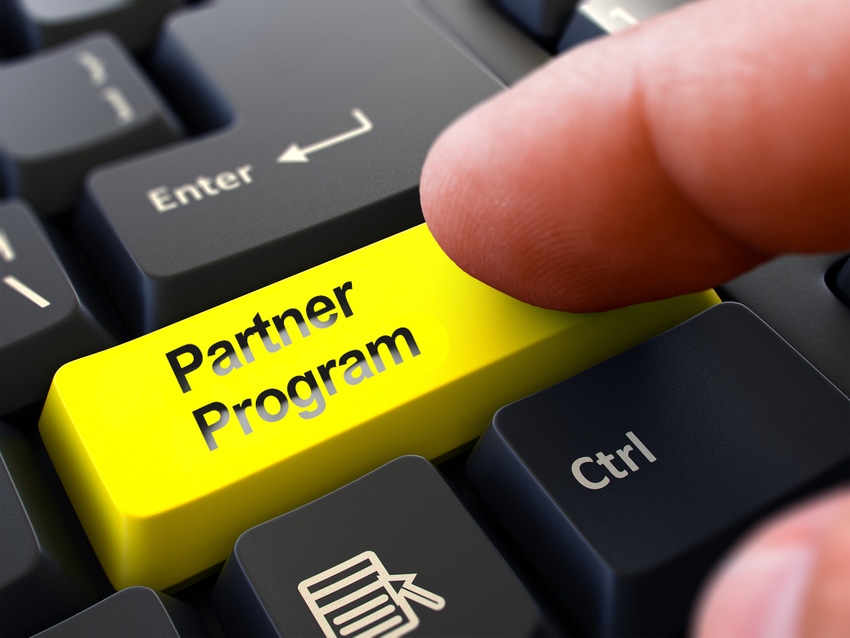The indie cloud provider just launched its second channel initiative in three years. Will you join?

The DigitalOcean partner program just went through its second major update in three years.
On Tuesday, the New York-based Amazon Web Services competitor debuted Partner Pod, the official expansion of its focus beyond developers — or managed service providers, if you consider the last change in 2019.
With Partner Pod, DigitalOcean now targets digital agencies, consultants and technology providers — any of whom could be managed service providers, resellers, integrators or other partner types (potentially, someday, even telecom agents who team with technology solutions brokerages). At the same time, DigitalOcean, via Partner Pod, is embracing small and medium businesses and startups, segments the 11-year-old cloud computing provider has not traditionally served.
Partner Pod represents the biggest announcement DigitalOcean has made since 2019 that could hit home with a number of Channel Futures readers. It’s also a bit confusing, because the Solutions Partner Program that DigitalOcean launched three years ago took aim at many of the same partners the company is once again pursuing via Partner Pod.
Where Has DigitalOcean Been in the Channel?
DigitalOcean has had a busy three years that could explain its relative silence within the indirect channel during that time.
First, the company saw an executive change in July 2019. Then, in September of that year, DigitalOcean rolled out the Solution Partner Program meant for SMBs via MSPs, IT providers, cloud resellers and web developers — similar to Partner Pod’s demographics.

DigitalOcean’s Jeff Seifert
At the same time, DigitalOcean was building its brand mostly by working with developers as it continues its efforts to lure users away from AWS, the world’s largest cloud computing provider (though some stats indicate Microsoft Azure has taken that crown), with cheaper pricing and attention to SMBs. That developer and SMB focus helped DigitalOcean reach the $500 million mark, which then allowed the vendor “to go public, raise some cash and be well positioned for growth,” Jeff Seifert, vice president of partnerships at DigitalOcean, told Channel Futures.
Indeed, DigitalOcean hit the stock market in March 2021. Its IPO pricing gave it a market cap of about $5 billion; that market cap during early trading on Oct. 25 hovers around $3.6 billion. Depending on which statistics or media outlet you turn to, DigitalOcean’s overall, global market share ranges between 1.5% and 1.9%.
Along the way, it’s unclear when and where DigitalOcean may have taken its eyes off the Solutions Partner Program ball. In addition to DigitalOcean, we tried reaching some of the partners mentioned in our 2019 article, to no avail. Seifert told us that, between 2019 and now, DigitalOcean has aimed “to grow to our full potential serving developers and software teams. In that journey, we transformed the business model and matured our go-to-market approach. In that three-year period, we continued to manage our trusted partners and many grew their business significantly, like Cloudways, Incsub and others.” (DigitalOcean, of course, bought Cloudways in August for its traction with SMBs.)
Even though what exactly happened with the MSP-centric DigitalOcean partner program remains a bit murky, the company is once again homing in on the indirect channel. And perhaps the main reason stems from the company’s intention to hit $1 billion in revenue by the end of 2026.
“We have the unique opportunity to share the success of the rise to becoming a public company and our go-to-market model,” Seifert said. “Our investment in partnerships is from the top down and we are excited about the future with our partners.”
DigitalOcean’s ‘Shared Goal’ for Partners, SMBs
Seifert has been on the job for almost a year. Under his guidance for the last 11 months, DigitalOcean worked toward the changes and structures evident in Partner Pod.
Here’s our most recent list of important channel-program changes you should know. |
Seifert boasts a line of channel roles — he’s worked with partners at Logi Analytics, Global Rescue, Flashpoint and IBM, all since 2006. Now, with the new DigitalOcean partner program in place, he’s looking ahead.
“We’re incredibly excited about the possibilities the Partner Pod opens up for our partners as we work toward our shared goal of driving growth for startups and SMBs,” Seifert said.
Yancey Spruill, DigitalOcean CEO, agreed.

DigitalOcean’s Yancey Spruill
“Small businesses represent a massive sector, yet are frequently overlooked and underserved by technology providers,” Spruill said. “Our goal is to connect these businesses with a broad, robust network of partners that are ready to help them succeed. In turn, our partners will be in a better position to grow their businesses. It’s a win-win.”
So, how will Partner Pod help the channel do that?
In a word, per Seifert? Choice.
Giving Partners Choices
Partner Pod features three buckets: Advisory, Business and Technology. Each supports different levels of …
… access to cloud products and, as applicable, technical support, training, co-marketing and more. DigitalOcean wants partners to choose which bucket best fits their goals and business models.
To that point, Advisory Partners generally will be consultants or ecommerce companies. These firms advise customers and earn referral commissions. Seifert and his team wanted to expand DigitalOcean’s sights to these often smaller partners because they understood the capacity for revenue, regardless of size.
“They’re doing a healthy business,” he said. “They’re a meaningful business.”
In fact, even referral partners could achieve DigitalOcean’s new “strategic” designation. This is invitation-only status for channel firms bringing in a specific minimum amount of annual recurring revenue, no matter their bucket.
Next, Business Partner serves the likes of cloud aggregators or agencies selling, hosting, managing or supply DigitalOcean platforms. In many cases, these are managed hosting providers for SMBs or experts doing “anything as a service.” These partners “want to co-sell, sometimes co-sell plus refer,” Seifert said. “We’re going to market together, leveraging each other’s brands, resources, infrastructure.” These partners are resale only and the platforms have DigitalOcean branding.
Finally, Partner Pod has a Technology Partner bucket. This is for companies such as independent software vendors, developers and native cloud providers using DigitalOcean. Like Business Partner, this is a resale-only model but branding can be multicloud or the partner’s own name.
Seifert said the new DigitalOcean partner program also lets partners choose among rewards, whether those are discounts, referral fees or credits.
“It’s about how we map to a partner’s business. We give them that partner choice,” he said. “Whether it’s margin or revenue share, we’ll do that. But we can also compensate them in MDF equivalents or credits so they can use those however they want. … It’s about meeting them where they’re at and how they want to go to market.”
As with most channel programs, the more partners sell or invest in DigitalOcean, the more the company extends in return. For example, delivering $25,000 in annual recurring revenue gives a partner access to a partner manager, market development funds, help with go-to-market strategies and so on.
“We don’t put any onerous hurdles in place,” Seifert said.
Regardless of track, Seifert told Channel Futures partners can expect an absence of channel conflict and as much support as they want.
Partner Pod Is in Effect
Over the past year, Seifert has spent time with DigitalOcean’s “couple hundred” partners to better understand their needs. (In 2019, the then-channel head cited more than 400 partners.) The intervening months also gave DigitalOcean the chance to showcase its “evolution and maturity,” as Seifert put it. That’s why now equals the best time for the company to revamp its partner approach, he said.
“We’ve got a great business model and are extending that to our partners,” Seifert said. “A lot of companies get ahead of themselves, try to build a channel before they build their own businesses.”
Partner Pod has taken effect. But DigitalOcean is giving existing partners time to move to the new structure even as it hopes to add partners. Jan. 1, 2023, will mark the official transition from any lingering DigitalOcean partner program initiatives to Partner Pod. Participants will have to sign new agreements, although Seifert said there are some considerations for grandfathering. DigitalOcean would not disclose what percentage ranges MSPs, resellers and others can expect to earn, and whether those fall higher or lower than previous channel program iterations.
In terms of support, Seifert oversees “a team of seven that’s growing.” However, he noted, “we’re integrated with the direct team and they’re probably … 300-400 people.” That encompasses support, account managers, solutions engineering and customer success personnel.
Expect the Partner Pod “bucket” structure to stick, for now. Seifert said that, after talking with partners, the DigitalOcean team went with that approach instead of the emerging life cycle compensation method, for simplicity’s sake.
“We haven’t broken it down by milestones in the sales cycle,” he said. “Could I see that? I could see that. I did that at Flashpoint. And I could see us getting there, over time. Right now, I think what we have … will help us go to market better.”
‘Figuring this Out Together’
Again, DigitalOcean is in search of its – forgive our inevitable Moby Dick reference – own white whale. We’re talking about that $1 billion revenue threshold. Hitting that number will require buy-in, and trust, from the indirect channel. That could pose a challenge for DigitalOcean, whose channel presence has not been notable. Partners have gotten up close and personal with other indie cloud providers, such as Vultr and Linode, at events including the Channel Partners Conference & Expo. Before they engage too deeply with DigitalOcean, they may require that same interaction from the company.
Seifert, for his part, doesn’t seem too worried. He thinks the “straightforward” nature of the new DigitalOcean partner program will inevitably attract MSPs, resellers and the like serving SMB customers.
“I know we’re meeting these partners where they are,” he said. “The other’s don’t — they put you in a box. … And we have very clear guidelines on how our partners interact with us and we interact with them.”
In any case, he added, “it’s an incremental journey. … We’re figuring this out together.”
Want to contact the author directly about this story? Have ideas for a follow-up article? Email Kelly Teal or connect with her on LinkedIn. |
About the Author(s)
You May Also Like


